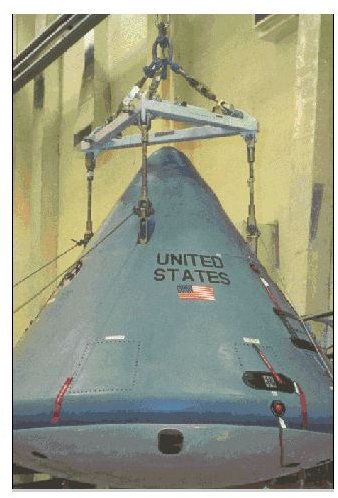Apollo 1 Space Mission: The History of the Apollo 1 Mission
Introduction:
During the 1960s, NASA carried out many successful space missions. On the basis of the information gathered from their previous missions, NASA planned their first manned Apollo mission, Apollo 204. It was an Earth orbit mission to check out the spacecraft. It was expected to be launched on February 26, 1967 from Launch Complex 34 in Cape Canaveral Florida. The Saturn 1B, which had never flown a manned mission before**,** was the booster in this mission; and CM 012 was the command module. Virgil I. “Gus” Grissom, the commander of first Gemini mission - Gemini 3, and the second American in space, was the commander of Apollo 204 too. Edward H. White II, the first American to walk in the space, and Roger B. Chaffee were the other two crew members. They had planned to remain 14 days in the space, before the scheduled landing in Atlantic Ocean on March 7 in the same year.
On January 27, the three crew members entered the command module, to test the craft, before the scheduled launch. Initially, several minor problems were detected. First, Grissom detected an unnatural smell in the suit loop. Next, there was a problem with the oxygen supply. The crew members found oxygen leaks from all suits; the rate of which varied with the posture of the crew members.This was followed by a serious communication problem between the module and the ground station. Then, the output signal from the gas chromatograph cable showed a change in the signal strength. At first, it was dismissed as natural, but at 23:30:54.8 GMT, there was a significant increase in the AC Bus 2 Voltage. The recorded data showed variations in other parameters at the same time.
Then, at 23:31:04.7 GMT, fire broke out in the command module. Three precious lives were lost within a few seconds. After this tragic incident, this mission was renamed as Apollo 1. The image above shows the crew members of Apollo 1.
Causes of the Disaster:

This is the image of Apollo 1 before fire.
Apollo 1 was mainly intended to check out the viability of the command and service modules. But the investigation team found that there were several problems in the design of the command module itself. The environmental control system, used in the command module, required continuous repairing. The coolant used in the command module was easily flammable and there were several instances of leakage of coolant through the solder joints. Instead of an oxygen mixture, pure oxygen was used inside the craft. As oxygen accelerates fire, this resulted in the sudden spread of the fire. Not only that, features for fire protection were not incorporated with the design of the command module. There were several flammable objects in the cabin. The hatch in this version was sealed from the outside and it prevented the early escape. One of the redesigns was to make a hatch that opened from the inside The doctors who conducted the autopsy pointed out that the crew had died of suffocation from poisonous gas, rather than from burns. The image below shows the capsule after fire.
Design Changes:

Even though the exact cause that triggered the initial fire was not completely detected, scientists learned several lessons from this tragic mission, and this helped them to take precautionary steps to avert such dangers in the future. After this tragedy, pure oxygen was never used inside the craft, during the test and actual missions. A mixture of oxygen and nitrogen gases was used inside the cabin. The hatches of Apollo 1 were inward opening types. They were replaced by outward opening hatches. The objects that were easily flammable were replaced by materials which were self-extinguishable. The suits of the astronauts in the ill fated spacecraft were made of Nylon fibers. After this incident, non-flammable Beta cloth was used.
Conclusion:
Even though tragedies related to space missions still occur, Apollo 1 is remembered as the one in which the craft and crew were destroyed and killed on the launch pad during test. Every space mission is risky, but it never deters scientists and brave men and women from exploring space with renewed interest.
Sources:
https://www.apollo1.org/MissionGoals.aspx
https://history.nasa.gov/Apollo204/tragedy.html
https://science.ksc.nasa.gov/history/apollo/apollo-1/apollo-1.html
Images:
https://history.nasa.gov/Apollo204/gallery10.jpg
https://grin.hq.nasa.gov/IMAGES/SMALL/GPN-2000-001834.jpg
https://grin.hq.nasa.gov/IMAGES/SMALL/GPN-2000-001159.jpg
This post is part of the series: Apollo Space Missions
Articles on various Apollo missions are included in this series.
